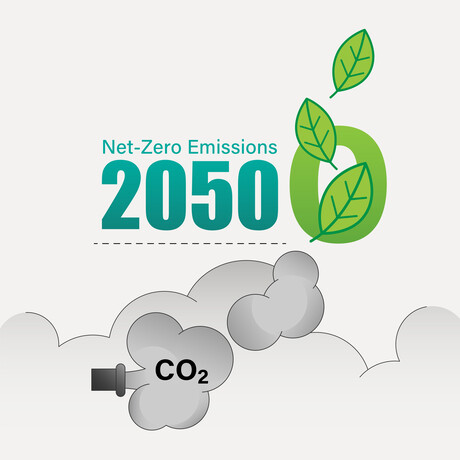Integrated Energy companies looking to achieve net-zero goals
Written by: Francis Cram

Drive towards clean energy.
Background
Following the conclusion of the COP26 summit, governments and organisations around the world are being asked to set ambitious 2030 emissions targets that align with reaching net-zero by 2050.
Integrated energy companies are coming under increasing pressure to transition to clean energy that comes from renewable, zero-emission sources that do not pollute the atmosphere.
Net-zero by 2050.
Challenge
COP26 aims to secure global net-zero carbon emissions by 2050. Countries around the globe are racing to reduce CO2 emissions and meet their environmental commitments. Accelerating the phase-out of coal and other fossil fuels will play a crucial role in achieving net-zero by the middle of the century.
If we take the UK as an example, the government has pledged to end all coal-fired electricity generation in October 2024, in a bid to decarbonise the power sector and eliminate the UK’s contribution to climate change by 2050.
There has been a major push in the development of renewable energy sources, but oil and gas production is not going to disappear. This means that integrated oil and gas companies must seek to decarbonise their existing operations and transition towards greener energy sources.
Renewable energy transition and net-zero for big energy producers.
Solution
Renewable energy is going to play a vital role in achieving net-zero, particularly for integrated energy companies with a high CO2 output.
Many energy producers are already taking steps to lower CO2 emissions by transitioning to clean energy sources such as wind, solar and hydropower and phasing out the use of fossil fuels.
For example, the UK has set a goal to source 100% of the country’s electricity from renewable sources by 2035. However, transitioning to renewable energy sources is going to be a massive challenge, especially for integrated energy companies in the oil and gas sector. Energy transition roadmaps are often complex and require significant amounts of time and money.
GIS data to support energy transition.
So how can MapStand support energy transition?
MapStand provides a single source of geospatial data covering the entire energy sector - from oil and gas to renewables and energy infrastructure. Integrated energy companies can track changes and gain a complete overview of the global energy industry as it evolves.
This enables energy producers to make data-driven decisions that will support energy transition and reduce the costs and risk of moving to renewable energy.
Francis Cram, CEO of MapStand, commented: “We are thrilled to be joining forces with some of the biggest companies in the energy industry and look forward to supporting them in developing a low carbon energy business and reaching Net-Zero by 2050.”
Utilising renewable energy data to reduce carbon emissions.
The MapStand platform offers users access to renewable energy datasets, including power plants, wind farms and onshore/offshore transmission networks. Energy producers can use this data to identify decarbonisation opportunities e.g. to understand the location of wind farms in relation to their operations when considering electrification
The global mapping datasets provide critical insight into the old and new energy systems. This enables integrated energy companies to make informed investment decisions, as they navigate energy transition and strive to reduce CO2 emissions and reach net-zero by 2050.
MapStand’s data is helping integrated energy companies reduce CO2 output.
“Access to data will be a key enabler for meeting our ambition of becoming a net-zero company by 2050 or sooner. Our partnership with MapStand, and the rich data layers they provide, give us excellent insights into the global energy system and help drive our decision making for entry into renewables and other investments. Partnering with smaller, flexible partners such as this allows us to move at pace, when new opportunities arise, to develop accelerated data analytics and insights.”
MapStand offers a single source of geospatial data.
MapStand data is supporting integrated energy companies as they navigate energy transition and identify decarbonisation opportunities. Our integrated oil and gas, infrastructure, and renewable energy layers are helping well-known energy companies assess the rapidly changing energy landscape and push toward net-zero.
Create an account on our MapStand Community if you would like to start accessing geospatial energy data or talk to one of our experts.
Ready to get started?
Create an account on our MapStand Community or talk to our experts